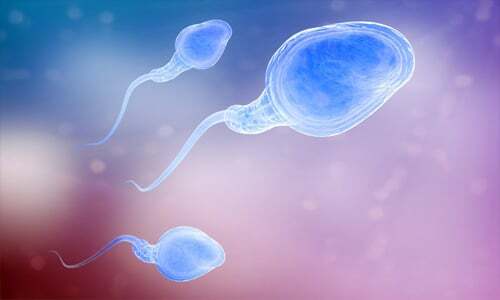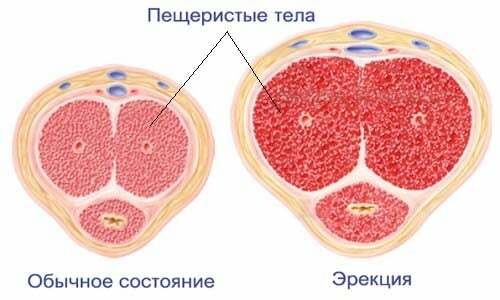Male fertility depends on many factors from nutrition and ending with health problems. If the fertilizing abilities of a man are at the lower critical level, then the couple faces the problem of the impossibility of conceiving a child. Previously, the causes of infertility were written off to the female half of the family, but the results of studies of the last decade show that more than a third of couples face the problem of conception due to the fact that a man has insufficient spermatozoa fertility. Unlike the female, male fertility can be affected by a number of factors associated with spermatogenesis, plugging of semenivorous pathways, testicular injuries, erectile problems, etc. Therefore, there can be quite a number of solutions to the problem.

The concept of male fertility
Fertility refers to the fertilizing abilities of a man, which consist in the production of a sufficient number of quality spermatozoa and their transport to the ovum. There is an erroneous opinion that the fertility of spermatozoa depends only on their number. Certainly, quantitative indicators play an important role in the process of fertilization, but other characteristics, such as morphology and motor activity of spermatozoa, are no less important.
A full spermatozoon simply has to be able to move in the right direction for a certain time. This skill is called motility or mobility of sperm. As for the morphological characteristics, they consist in the correct structure and form of the sperm.
Index and fertility rate - how to determine them
In order to assess male fertility, the medical science uses the Farris and Kruger indices, which are determined from spermogram data. Similar indicators are calculated to obtain data on the possibility of fertilization during one sexual contact. Under the Kruger index, which is used increasingly, it is assumed that the parameters of the tail, cervix and sperm head are expressed, which is expressed as a percentage.
- With a Kruger index below 30%, a low fertile threshold is diagnosed;
- A value above 30% indicates good fertility, which provides positive predictions of probable conception.
The definition of the Farris index involves calculating the total number and percentage characteristics of immobile, inactive and mobile sperm in the entire amount of sperm and in 1 ml. Fertility according to Farris should normally be 200 units, although Russian specialists regard the indices at 20-25 as a normal male fertility. If the index is less than 20, then reduced fertility is diagnosed, respectively, the indices above 25 indicate an increased fertility of the spermatozoa. Indicators of the Farris index today are not used so often, giving preference to measuring the fertility of Kruger.
The fertility rate does not refer to the terms of medical science, it is a macroeconomic definition used in calculating the fertility rate in a country or region. In other words, these are prognostic indicators regarding possible changes in the population of the country or region.
What shows the sperm-test
To assess the male fertility, you must sperm for analysis. A similar study of sperm is called a spermogram, which tells about the level of fertility of a certain man. The spermogram is usually administered to couples when planning pregnancy or those who have difficulty with conception. In addition to the fertility index, the spermogram also reveals other indicators such as the number of spermatozoa, the total volume of seminal fluid, and its acidity.
 Usually, the seed seminal fluid with a normal fertility rate has a whitish-gray color with a lot of inclusions of light tones, which is considered quite acceptable norm. An alarm signal is the appearance in the sperm of a slightly pink hue, which is usually associated with an excessively high content of red blood cells in it. In this case, hemospermia is diagnosed. Semiconductor viscosity is considered to be an important indicator. Theoretically, it is not associated with fertility, however, increased viscosity is often caused by pathological problems in the prostate, which indicates the existence of abnormalities in semen biochemistry. In the original form, sperm has a rather thick consistency, but then under the influence of prostatic enzymes, it liquefies.
Usually, the seed seminal fluid with a normal fertility rate has a whitish-gray color with a lot of inclusions of light tones, which is considered quite acceptable norm. An alarm signal is the appearance in the sperm of a slightly pink hue, which is usually associated with an excessively high content of red blood cells in it. In this case, hemospermia is diagnosed. Semiconductor viscosity is considered to be an important indicator. Theoretically, it is not associated with fertility, however, increased viscosity is often caused by pathological problems in the prostate, which indicates the existence of abnormalities in semen biochemistry. In the original form, sperm has a rather thick consistency, but then under the influence of prostatic enzymes, it liquefies.
Quantitative indicators of spermatozoa relate to the main parameters of the ability to fertilize, but in its determination it is necessary to take into account other data, such as the percentage of morphologically mature and mobile spermatozoa. Sometimes spermogram can show the absence of sperm in the seminal fluid, which indicates the development of azoospermia, or their amount is too insignificant, then the oligospermia is diagnosed. There is a possibility that spermogram will reveal morphologically abnormal spermatozoa, which is characteristic of teratospermia, or there will be too many immobile spermatozoa in the semen pointing to necrospermic processes.
What factors affect the fertilizing capacity of spermatozoa
Every year, a steady decline in fertile men occurs, and the number of infertile women increases. Specialists attribute this tendency to a decrease in the number of men who are capable of fertilization with such factors:
- Tobacco smoking. Nicotine draws from the body reserves of ascorbic acid, so necessary for the normal maturation of full spermatozoa, in addition, nicotine toxins adversely affect the overall health. Partly this explains the high percentage of births of children with congenital anomalies in parents who suffer from nicotine addiction.
- Anabolic and narcotic substances. Steroid anabolics, which are so fond of bodybuilders and other athletes, with prolonged use provoke the termination of hormonal productivity of androgens, which has a very negative effect on the quality of seminal fluid. It is known that drugs like heroin, cocaine or marijuana can halve the number of spermatozoa in seminal fluid, and if you abuse drugs for a long time, you can become completely sterile.
- Alcohol. Unless the baby is not aware that alcohol has a negative effect on male reproduction. Ethanol has a toxic effect on the testicles, in which the development and further maturation of spermatozoa occurs. Alcohol is also harmful for other, more important organs. Therefore, drinking parents have underdeveloped, weak or sick children. Sometimes birth does not happen at all, because the abuse of alcohol increases the likelihood of spontaneous miscarriage.
- Incorrect power. The diet greatly affects the processes of spermatogenesis, therefore, with a deficiency of nutrient components, there is a disruption of the formation of spermatozoa.
- Environmentally unfavorable situation. Exhaust gases, industrial emissions - all this negatively affects the quality of the inhaled air. Therefore, men living in industrialized areas and large cities are more likely to suffer from reduced fertility.
- Treatment with some medications such as antibiotics, cytostatics, as well as drugs used in the therapy of autoimmune or oncological pathologies, can also negatively affect the fertilizing ability of a man.
- The testicles are overheated. For normal maturation of spermatozoa, a temperature of about 33-34 ° C is needed, which is why the testicles are not located inside the body, but outside. If a long time to subject them to overheating, for example, when visiting a bath or hot bath, prolonged sedentary work or wearing tight panties, spermatogenetic processes are violated.
- Pathological factors like varicocele, diabetes, hypertension, sexually transmitted diseases and kidney diseases, endocrine and metabolic diseases also have a negative effect on fertility.
- One of the latest discoveries of scientists was the confirmation that the radiation emitted by cellular communication devices can significantly reduce male fertility.
Very rarely there is an excessively increased fertility, in which spermatozoa have special qualities. Sperm can survive in the female body for two weeks. With normal fertility of such spermatozoa only 2-3%.If their number increases to 50%, male fertility rises to the maximum. Such a man after a single sexual communication is able to impregnate absolutely any partner. This phenomenon in nature is considered to be phenomenal.
Methods for increasing fertility
Sometimes, to improve the quality of spermatozoa, hormonal drugs and preparations of natural origin such as Spemana are prescribed. In those cases when the lowered male fertility is not caused by pathological factors, it is possible to cope with the problem on its own. One of the recommended conditions is the regularity of sexual intercourse, then the probability of conception increases. It is inadmissible for a man with reduced fertility to maintain a low calorie diet, because such restrictions in the diet lead to androgenic disorders that affect reproduction. In nutrition, you need to keep the protein-fat balance, so as not to admit obesity, which adversely affects fertility.
The diet should contain a sufficient number of fruit and vegetable dishes, preferably fresh. In addition, it is recommended to exercise moderately in physical activity. It is very useful to take bioactive preparations with a large amount of tocopherol, selenium, zinc, carnitine and folic acid approximately half a year. It is extremely important to avoid overheating of the testicles, which negatively affects male fertility. To do this, do not abuse bathing procedures, in the heat of wearing loose light trousers, avoid wearing tight swimming trunks. It is recommended to plan conception at the beginning of the winter season, when the spermatozoon activity is at the highest point.



